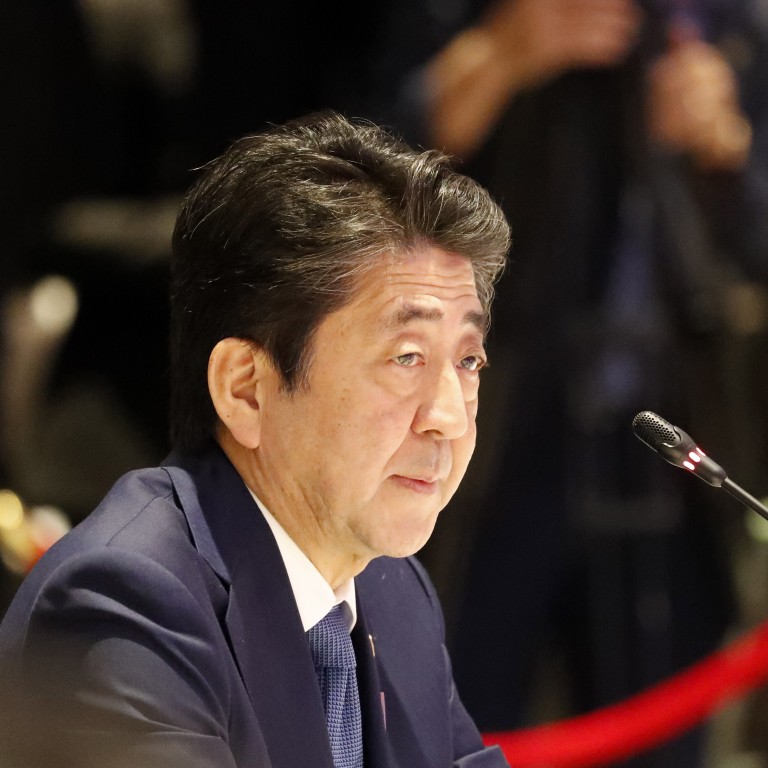
Shinzo Abe’s legacy: a stagnant economy, loyalty to Donald Trump, deepening rivalries with China and the two Koreas – and the longest tenure as PM
- Shinzo Abe has failed to resolve old grievances or revitalise the economy ahead of the coming population crunch. His dream of a constitutional revision is also a long shot, yet he has served longer than any PM in Japan’s history
Japanese media featured smiling shots of Shinzo Abe, who has just broken all records to become Japan’s longest-serving prime minister, at 2,887 days and still going strong, striding atop Japan’s political scene like a real-life colossus.
For all the celebrations of Abe’s record-breaking past, the real questions are for the future: what is Abe doing with his power and how is he preparing an ailing Japan for the challenges of an uncertain future.
If you take a simple snapshot of Japan today, life seems sweet: optimists point to great social stability, relative equality by the standards of other rich countries, continuing economic growth and high employment inside a stable system where most people feel they are middle class. It is an island of prosperous stability in a difficult world. A friend who is head of one of Japan’s big banks complained that he was earning just US$1.25 million, whereas Wall Street friends and rivals receive more than 20 times as much.
Where Japan’s economy should be responsive to changing times, it is set in its ways. Abe has tried to encourage key changes, such as raising wages and bringing women into executive positions, and failed. Women are mostly joining the workforce in low-paid and part-time jobs. Corporate Japan clings to its profits rather than investing in workers or cutting-edge technology.

Education is too bureaucratic. Young Japanese are content to stay at home and not face foreign perils. This is a dangerous complacency when rivals all around are prowling the world hungrily.

And Tokyo shows nervous tension as it watches the rise of China, economically and militarily.
Why the South Korea-Japan trade dispute may not be resolvable
It will be a tough task to win the two-thirds majority in the Diet, especially if the coalition partners of Abe’s Liberal Democratic Party, the minor party Komeito, persist in opposition.
Non-LDP members of the Diet are not so much an opposition as an ever-changing kaleidoscope of bodies colliding, forming parties and instantly rushing apart. Their best hope is to have a sufficient constellation at election time to deny the LDP a two-thirds majority.
Will Emperor Akihito’s legacy of pacifism persist in Japan’s new era?
Critics contend that immediate constitutional changes will be more symbolic than real – Japan’s so-called Self-Defence Forces are more than a match for most regular armies, superior technologically even to China, though not in terms of manpower and firepower.
Going nuclear would be a road to madness with so many fractious neighbours with old scores to settle. Abe should reconsider his priorities and the best use of his political capital.
Kevin Rafferty has reported on Asia for 50 years, as the Asia editor of the Financial Times, founder-editor of Business Times, Malaysia, as a World Bank official and as a professor at Osaka University

